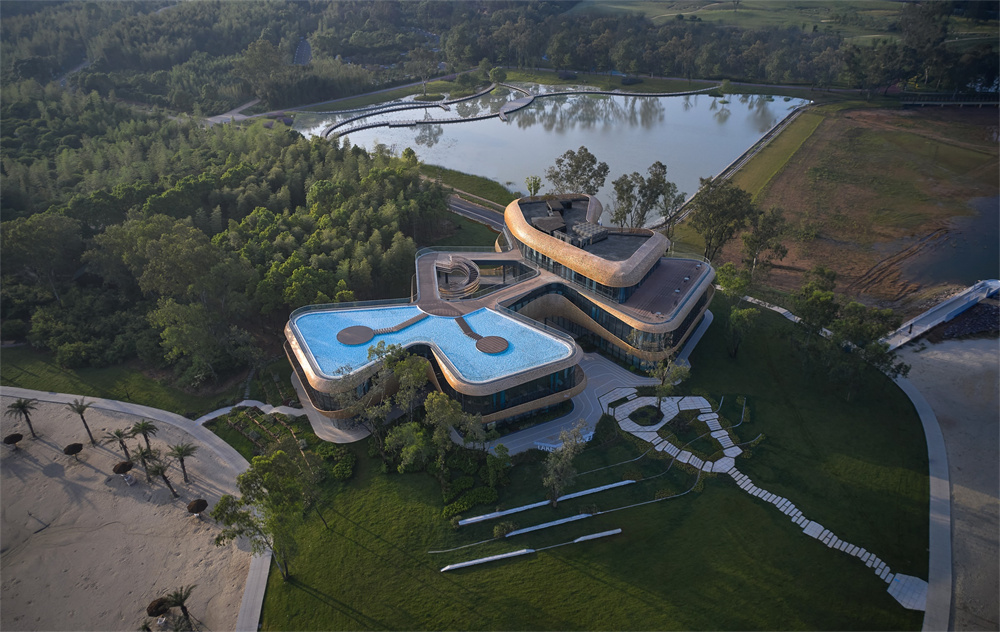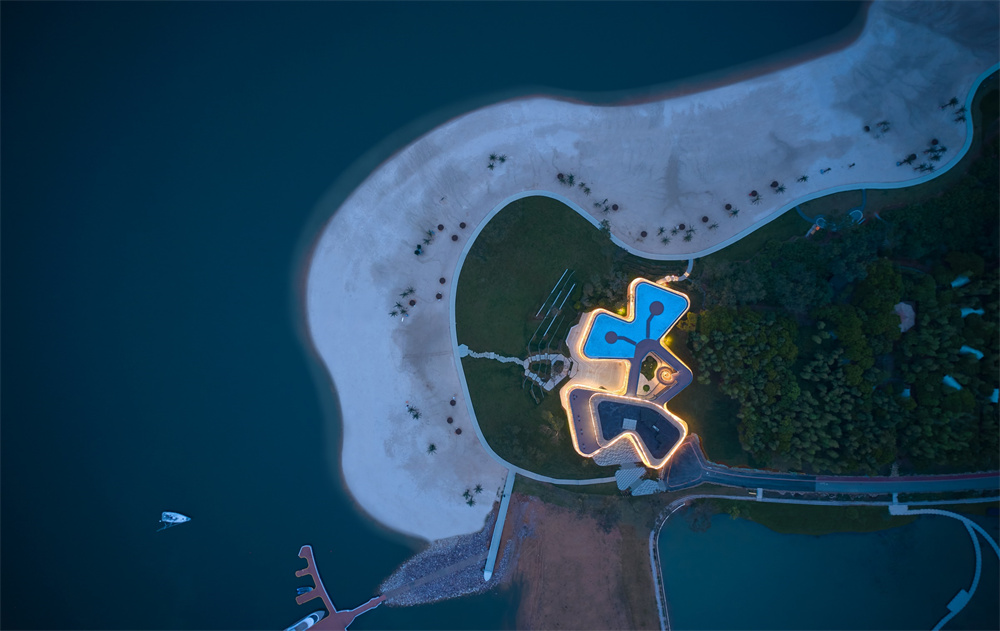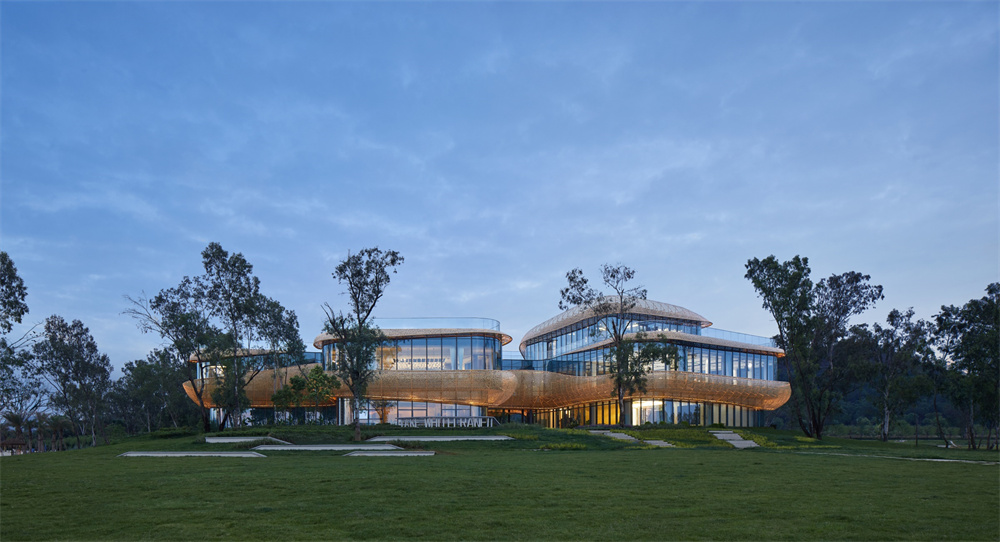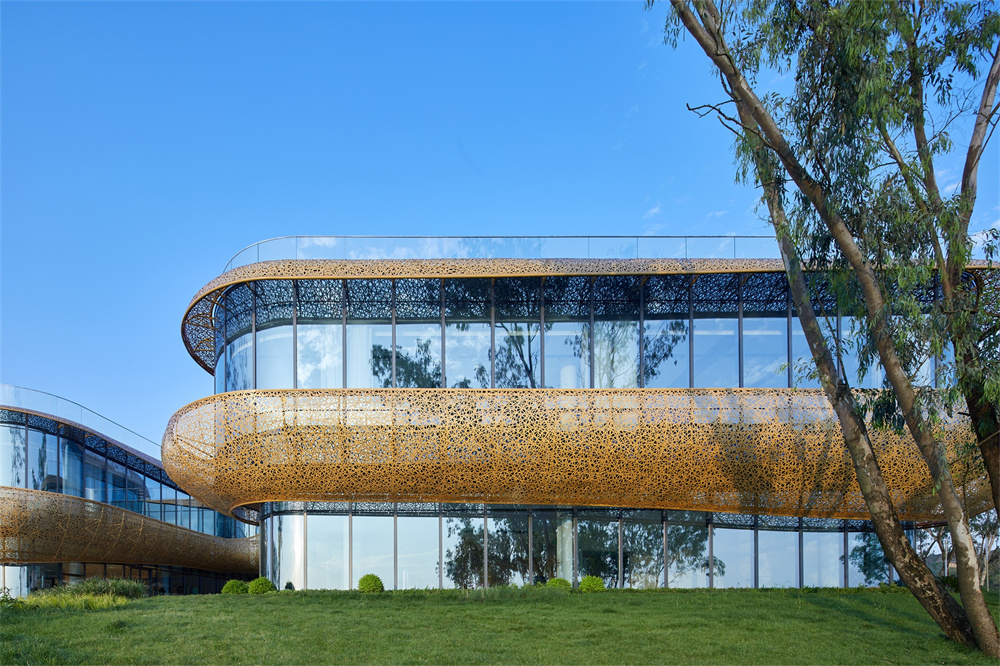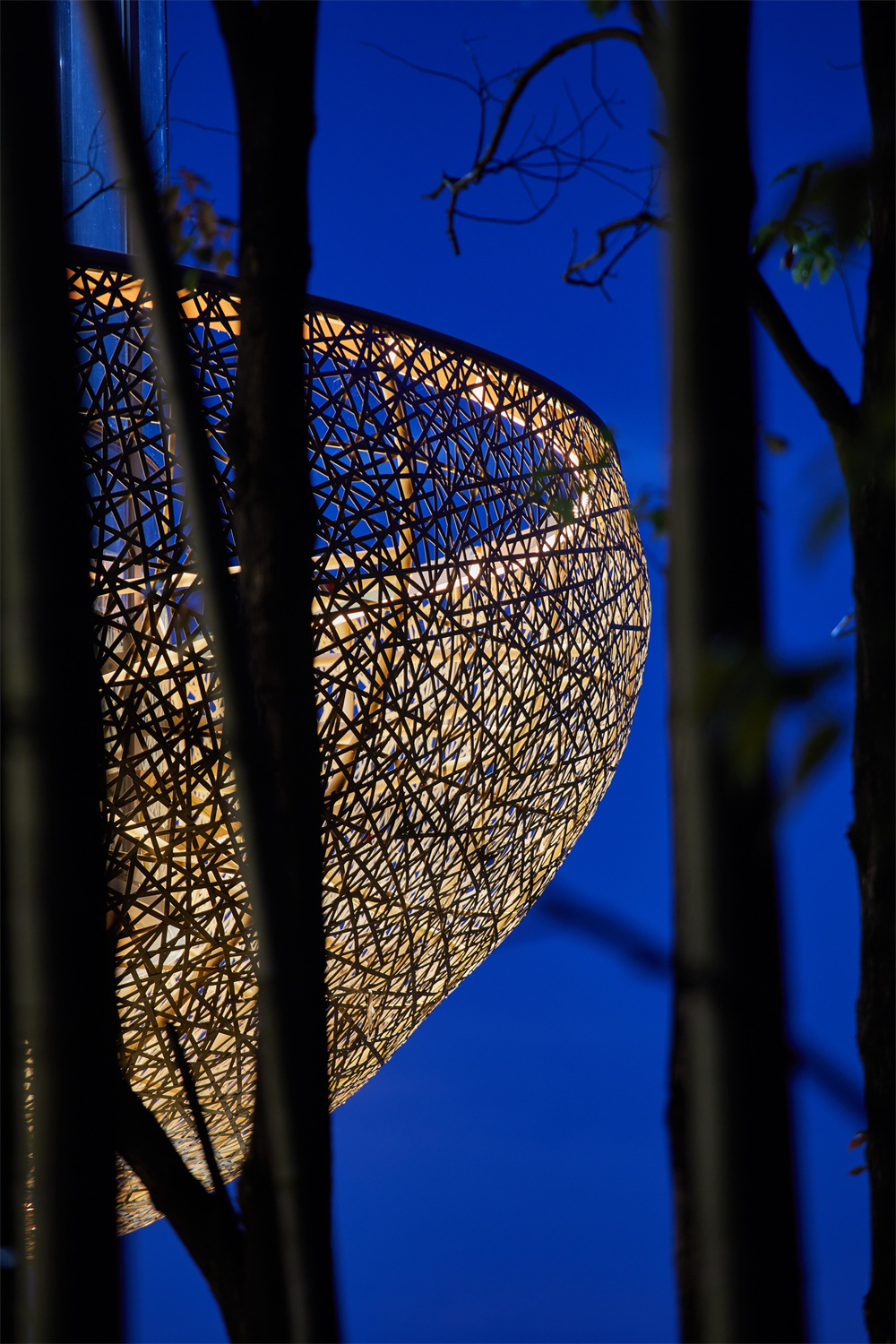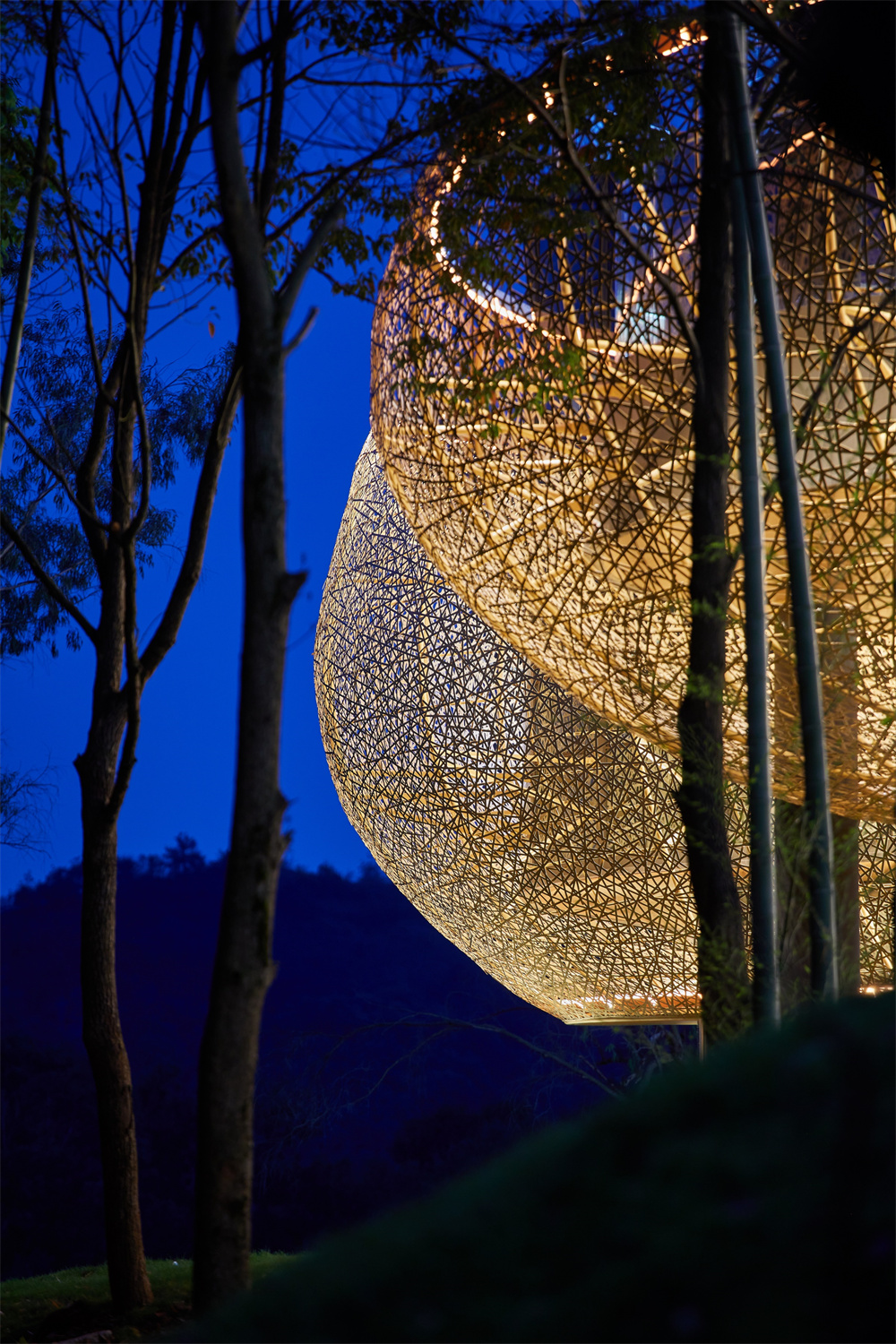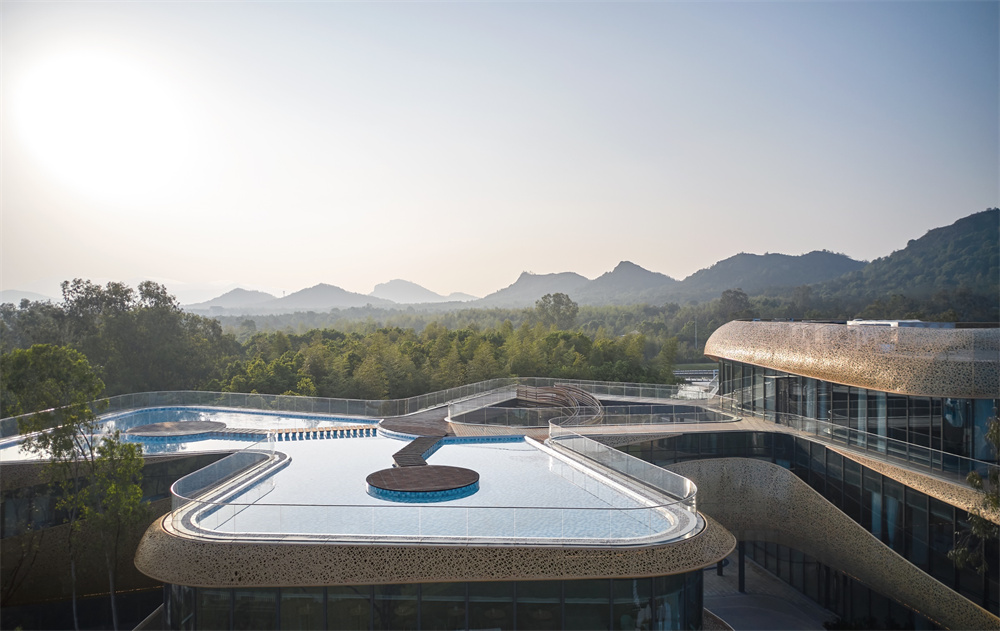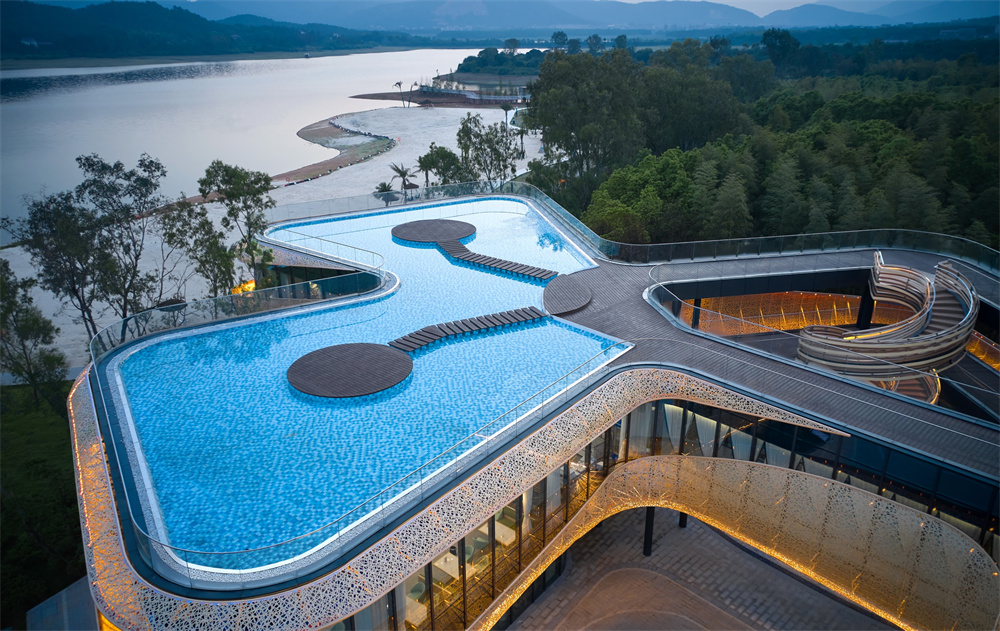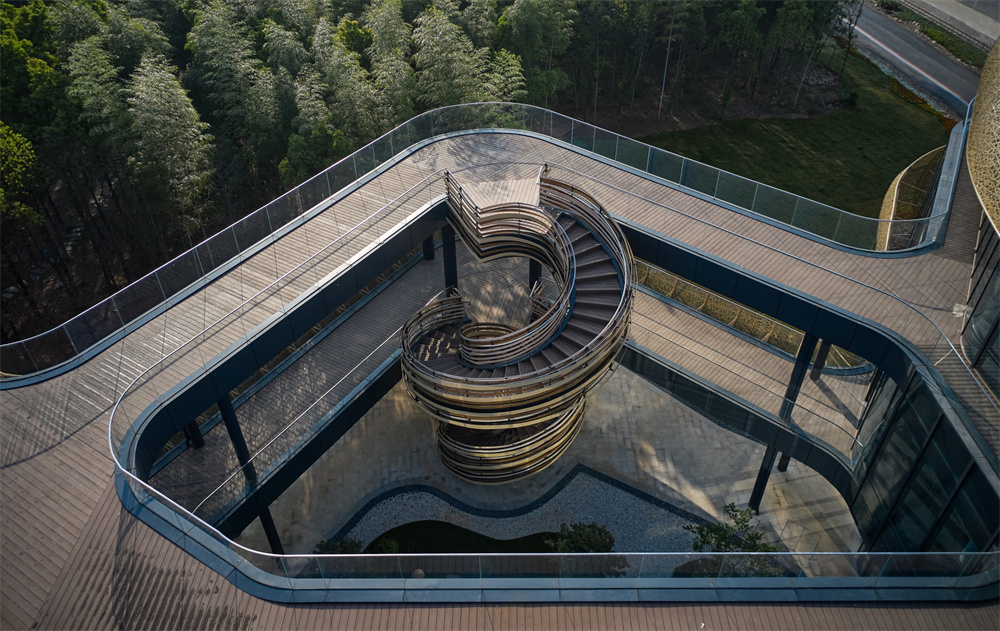Best of TOP 10 Designer
Designer / Agency
- Jinang Yang
Category
- TOP 10 Designer
Award
- 2023 Innovation
Share this project
PROJECT
DESCRIPTION
Located adjacent to Yingtan City, Jiangxi Province, White Crane Lake covers an area of 10 square kilometers and boasts panoramic views of the horizon, bamboo forests on its shores, calm waters, and a vast blue sky above, creating a tranquil and poetic atmosphere for visitors there.
The Visitor Center is the centerpiece of a comprehensive development initiative for White Crane Lake. The challenge for the designers was placing a stylistically modern cultural building aimed at increasing tourism, in a natural environment defined by its quiet ambience. The project had a multitude of functional requirements to fulfill, while balancing the need to elegantly coexist with a landscape of forests, mountains, and the lake itself.
Design Concept
When the architect Jin’ang Yang was first formulating his design approach to the project, a simple solution would have been to take the materials and forms of the existing local houses in Jiangxi – and then abstracting and translating that language, essentially reinterpreting traditional architecture with a modern approach. However, considering that the building’s program requires nearly 3,000 square meters of area, it was quickly acknowledged that the appearance of a new, large-scale traditional Chinese-style building on the water's edge would be visually disturbing and incongruous with the nature surrounding it.
Upon visiting the site for the first time, the architect’s intuition and experience came into play and a general design approach was decisively determined. Rather than overtly associating with the local residential architectural style or excessively emphasizing traditional materials and methods of construction, the new building would instead accentuate the natural qualities and atmosphere of the site of White Crane Lake itself.
The Visitor Center is located on a tidal flat, surrounded by the lake on the north, south, and west sides of the site, with an extensive bamboo forest to the east. As the sun rises in the early morning, the lake is shrouded in dense clouds and mist which gently disperse themselves in the surrounding forests. Visitors walking through the forest at this time of day have the impression of simultaneously walking through trees and clouds, high in the sky.
Concept Sketch
In order to reduce its intervention on the environment, the volume of the building adopts a decentralized layout, so that its overall form is divided into a series of connected volumes which effectively reduces its perceived visual scale. The building’s design also incorporates rounded forms and curves, softening its relationship with its surroundings and giving the impression of flow and movement – the project invites visitors to stroll around it in order to take in its overall design, with the views of its form and environment constantly changing with every step, unfolding like a traditional Chinese scroll painting on the lake.
Material & Skin
The Architect choose a transparent glass volume to intervene in the environment, and then introduce a second layer of "bamboo skin". The skin floats up and down around the building, like the wings of a white crane, or like a leisurely bamboo cloud on the waterfront. The continuous skin integrates separate building volumes, giving them the appearance of continuity and integration with nature.
The defining line of the building’s envelope was established according to programmatic and formal considerations. Following this, secondary points along the envelope were chosen as a basis for the undulations of the skin, according to the building’s functions and the particular view of the landscape at each point – resulting in the semblance of a floating bamboo cloud from the exterior, and ensuring the best possible views from the interior public spaces.
The architect conducted a series of schematic explorations, looking at various potential patterns which could be incorporated. After considering horizontal and vertical grid-like versions of the skin, as well as an option of a series of interconnected pyramidal forms, a large number of computer analyses were made using Grasshopper software. In the end, the lightest option was chosen for its clear, translucent quality, and practical feasibility as a “woven” texture for the building’s skin.
Significant on-site testing of the exterior skin was conducted in order to ensure durability and the desired visual and tactile effect. In the end, the designer finally decided to adopt a special surface-treated metal alloy, which provides a robust material with a strong resemblance to natural bamboo, long-term viability, ease of maintenance, and overall cost. For a modestly scaled public building, it was deemed to be the best solution by all parties involved.
A comprehensive lighting system has been integrated into the building’s outer skin, so that when the sun goes down and darkness sets in, the complex external latticework brilliantly lights up. The building appears to shine, recalling a bamboo lantern floating on the lake, creating a visually memorable scene for visitors to the site.
Whirlpool Staircase & Rooftop Pool
In the courtyard enclosed by the building volume and a series of elevated walkways, the architect has carefully placed a spiral staircase: it allows visitors to ascend to the second-floor viewing platform from ground level, but also provides a strong visual focus for the courtyard space overall. Its concentric circular steps with changing radii and variegated side railing create a dynamic, complex shape which provides a creative tension with the other elements of the space.
Construction of Whirlpool Staircase
A borderless pool has been incorporated into the roof terrace on the second floor, which has been designed so that the surface of its water seems to blend with the distant blues of the lake and sky beyond when looking over and across it.
Function
The visitor center is divided into a number of clearly legible volumes, whose functions include a general reception area, restaurant, conference space, and VIP Club, among others.
The reception hall is located in the southwest portion of the site to offer convenient accessibility, the restaurant occupies the northwest side which offers the best views of the landscape, administration is in the quieter southeast corner, and the VIP Club is placed on the top floor to maximize views of the lake.
Conclusion
The architect took on the project with the intent of applying an approach informed by a kind of poetic imagination, ultimately arriving at the concept of "bamboo clouds on the water", allowing the new building to gently integrate with the surrounding mountains and forest, seamlessly taking its place among the natural elements of the area. The mist that rises from the lake in the early morning is transformed into an edifice which seems to hang in the air, receding into floating clouds of bamboo on the shore.
Project Name: White Crane Lake Visitor Center
Developer:Jiangxi Guogui Culture & Tourism Development Co
Project Location: White Crane Lake, Yingtan, Jiangxi Province
Design Institution: Archperience (Beijing) Design + Verse Design
Project Leader:Leon Dai
Project Architect:Jinang Yang
Design Team:Chuanhui Huang, Zhendong Wang, Huijuan Wang, Zheng Zhang
Area: 3620㎡
Completed: May, 2023
Construction Drawings Design:Jianxue Achitecture and Engineering Design Institute Co
Photography:Jianghe Zeng

Designer:Jinang Yang
Mr. Yang Jinang, a First Class Registered architect of China, has a masterʼs degree in architecture from Cornell University and a bachelorʼs degree in architecture from Tsinghua University. He has worked for SOM , AEDAS and other well-known foreign design institutions for a long time, and has more than ten years of experience in the design of high-end hotels, commercial complexes, industrial offices, cultural tourism. He is good at bridging the process of pre-conceptualization to feasible implementation through the whole process design concept. His international vision and bilingual communication skills bring solid support and continuous creative energy to the project and the team. Since the founding of Archperience, he has greatly stimulated the teamʼs creativity with his excellent team organization and communication skills, fully understood and guided clientsʼ needs, and completed a series of projects with high quality through excellent creativity and construction detail control, gaining good reputation and meeting clientsʼ expectations.

